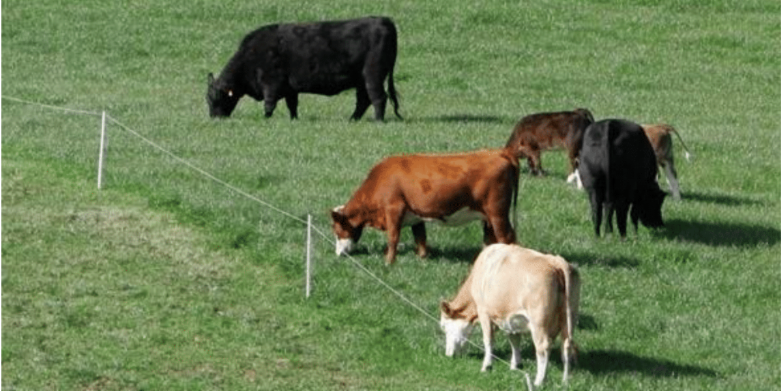
Drought often limits pasture forage availability and sharply reduces hay yields on many farms, which increases the amount of hay or other stored feed needed during the cooler months of the year. However, stockpiling (which simply refers to allowing forage to accumulate in a pasture to provide grazing at a later time) can be quite beneficial. Stockpiling can be used with virtually any forage crop, but it works particularly well with fescue.
The time to begin stockpiling fescue is when growth begins in autumn. At this time cattle should be removed from a field to be stockpiled and the pasture should be clipped (many fields have already been grazed this low). Any needed phosphorus and potassium should then be applied according to soil test recommendations, along with 40 to 80 pounds of nitrogen per acre.
The timing of nitrogen application is important. Applying nitrogen too early may encourage the growth of summer grasses such as crabgrass or common bermudagrass and subsequently reduce the production of tall fescue. Applying nitrogen too late will reduce the quantity of forage that is stockpiled. In the DeepSouth, mid-August to mid-September is about the right time to apply nitrogen to fescue Ideally, the nitrogen should be applied shortly before rain is expected.
The forage growth that results from the fertilizer application should be allowed to accumulate until November or December when hay feeding would otherwise need to be begun. During the stockpiling period, other forages that may be available on the farm such as bermudagrass, summer annual grasses, lespedeza, grass-clover mixtures, or crop residues should be grazed.
When other pasture grass is gone, stockpiled fescue can be grazed as “standing hay. ” To make efficient use of stockpiled fescue, a temporary electric fence can be installed across the field, dividing it so that the first area to be grazed has a source of water and minerals. Once the animals have grazed a given strip, the fence can be moved, opening up anew strip. Ideally, this should be done about every 3 to 4 days. This can be repeated until an entire field has been grazed. This approach is much more efficient and economical than allowing the animals to have access to all or most of the stockpiled grass at one time.
The relatively high quality of autumn stockpiled tall fescue provides good gains on both weaned stock and mature cows. These gains are in response to the high crude protein and digestibility levels that occur in response to lower temperatures and shortening day length. In studies in several states, the gains of calves have ranged from about 1 pound to 2 pounds per day on stockpiled fescue.
The highest gains on stockpiled fescue occur with endophyte-free or novel endophyte types. However, stockpiled ‘Kentucky 31’ tall fescue has lower endophyte toxin levels than green pasture grass, thus allowing somewhat better animal gains than would occur on green fescue pasture forage. Regardless of endophyte status, tall fescue forage resists deterioration from the weather.
Stockpiling tall fescue can extend the grazing season, give a good return of good quality forage for each pound of nitrogen fertilizer applied, and can provide a beef cow heard an ideal place for wintering and calving. Stockpiling won’t work well if there is no rain, but the technique normally quite dependable and should be considered in virtually any year by producers who have fescue pasture available on which this technique can be used.
Foraging Ahead is a column presented by Ragan & Massey and written by Dr.Don Ball, Professor Emeritus at Auburn University. Dr. Ball is one of the authors of the popular book “Southern Forages,” which can be found via a computer search that uses the words,“Books, The Fertilizer Institute.”
